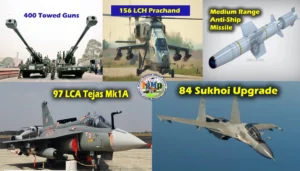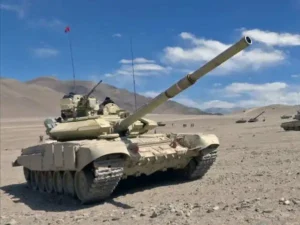The risk of renewed skirmishes with China is growing
by Brahma Chellaney
Two years after nightie hand-to-hand combat with Indian troops resulted in China’s first combat deaths since its 1979 Vietnam invasion, the Chinese and Indian militaries remain locked in multiple standoffs over some of the most inhospitable terrains on Earth.
The war in Ukraine may be obscuring China’s border conflict with India, including the largest Himalayan build-up of rival forces in history. But as U.S. Defence Secretary Lloyd Austin reminded the annual Shangri-La Dialogue in Singapore last weekend, “we see Beijing continue to harden its position along the border that it shares with India.”
With tens of thousands of Chinese and Indian troops facing off against each other, the risks of renewed skirmishing, if not outright war, are significant.
The clashes of June 15, 2020, were the bloodiest of a series of skirmishes or scuffles that began more than six weeks earlier after China, taking advantage of India’s preoccupation with enforcing the world’s strictest coronavirus lockdown, stealthily infiltrated key border areas in the high-altitude Indian region of Ladakh and established heavily fortified bases there.
The surprise encroachments were not nearly as clever a plan as Chinese President Xi Jinping probably thought when he gave his go-ahead. Far from handing China an easy win, they have plunged Sino-Indian relations to a nadir, kept the border crisis simmering and made the fact of a major Indian military build up inevitable.
The June 15, 2020, clashes not just marked a watershed in India-China relations; they also stood out for their savagery. With a 1996 bilateral agreement prohibiting the two countries’ soldiers from using guns at the border in peacetime, encroaching Chinese soldiers employed metal fence posts and clubs wrapped in barbed wire in a post-sunset ambush attack on an Indian army patrol.
Some Indian soldiers were beaten to death, others were thrown from the soaring cliffs into the fast-flowing Galwan River before Indian reinforcements arrived and fought pitched hand-to-hand battles with the intruders under a moonlit sky.
After the hours long fighting, India quickly honoured its 20 fallen soldiers as martyrs and then established a war memorial to commemorate their sacrifices. But China has still not disclosed its death toll, which U.S. intelligence reportedly placed at 35 and Russia’s government-owned Tass news agency estimated at 45. More than eight months after the clashes, Beijing announced posthumous awards for four Chinese soldiers without revealing the full death toll.
This should not be a surprise, as the Chinese Communist Party rarely reveals the full truth: it disclosed the Chinese death toll from the 1962 war with India more than three decades later in 1994 after significantly lowering the figure.
With the world’s most powerful propaganda machine, the CCP seeks to manufacture reality. While releasing a propaganda video of the clashes, it jailed at least six Chinese bloggers for criticizing its death toll cover-up, with one blogger who had 2.5 million followers on Weibo sentenced to eight months in prison. More recently, it picked the military commander who led the ambush attack as a torchbearer of the Beijing Winter Olympics, provocatively feting him as a hero.
The border crisis has also cast an unflattering light on India, which has instituted no inquiry into why its army was taken unawares by the multiple Chinese intrusions, some of them deep into Indian territory.
India is the world’s third-largest defence spender after the U.S. and China, with the army continuing to appropriate the lion’s share of the defence budget. Yet over the years, the Indian army has repeatedly been caught napping by the cross-border actions of China and Pakistan.
Indeed, it has become somewhat of a tradition in India that, whenever an adversary springs a military surprise, the army generals take cover behind the political leaders, and the ruling politicians hide behind the generals, allowing accountability to go unenforced.
Chinese forces braved harsh weather to intrude into forbidding landscapes, just before thawing ice reopened access routes. But the Indian army ignored warning signs from China’s heightened military activities near the frontier, including an unusually large, wintertime troop exercise that became the launchpad for the aggression.
Yet not a single Indian army commander was relieved of his command for the fiasco. Worse still, Prime Minister Narendra Modi has maintained a conspicuous silence on the military crisis for the past two years.
Instead, Modi has put faith in negotiations, with Beijing using endless talks to string India along while frenetically building new warfare infrastructure that General Charles A Flynn, head of the U.S. Army Pacific, recently called “eye-opening” and “alarming.”
While withdrawing from some positions it seized, China has turned other captured areas into permanent all-weather military encampments, with large combat-ready forces and newly built roads and heliports that allow front-line positions to be quickly reinforced with fresh troop inductions.
Xi’s aim against India, as in the East and South China Seas, is for China to ultimately win without fighting by employing coercion under the shadow of its deployed military might. To Modi’s credit, India appears determined to frustrate that goal, vowing to sustain the military standoffs, despite the risk of a full-scale war, until China rolls back its encroachments.
India, the world’s largest democracy, is on the front lines of the battle between democracy and autocracy. If China is able to coerce India into submission, it will open the path for the world’s biggest autocracy to gain supremacy in Asia and reshape the international order in its favour. No wonder Secretary Austin said in Singapore that India’s “growing military capability and technological prowess can be a stabilizing force in the region.”







